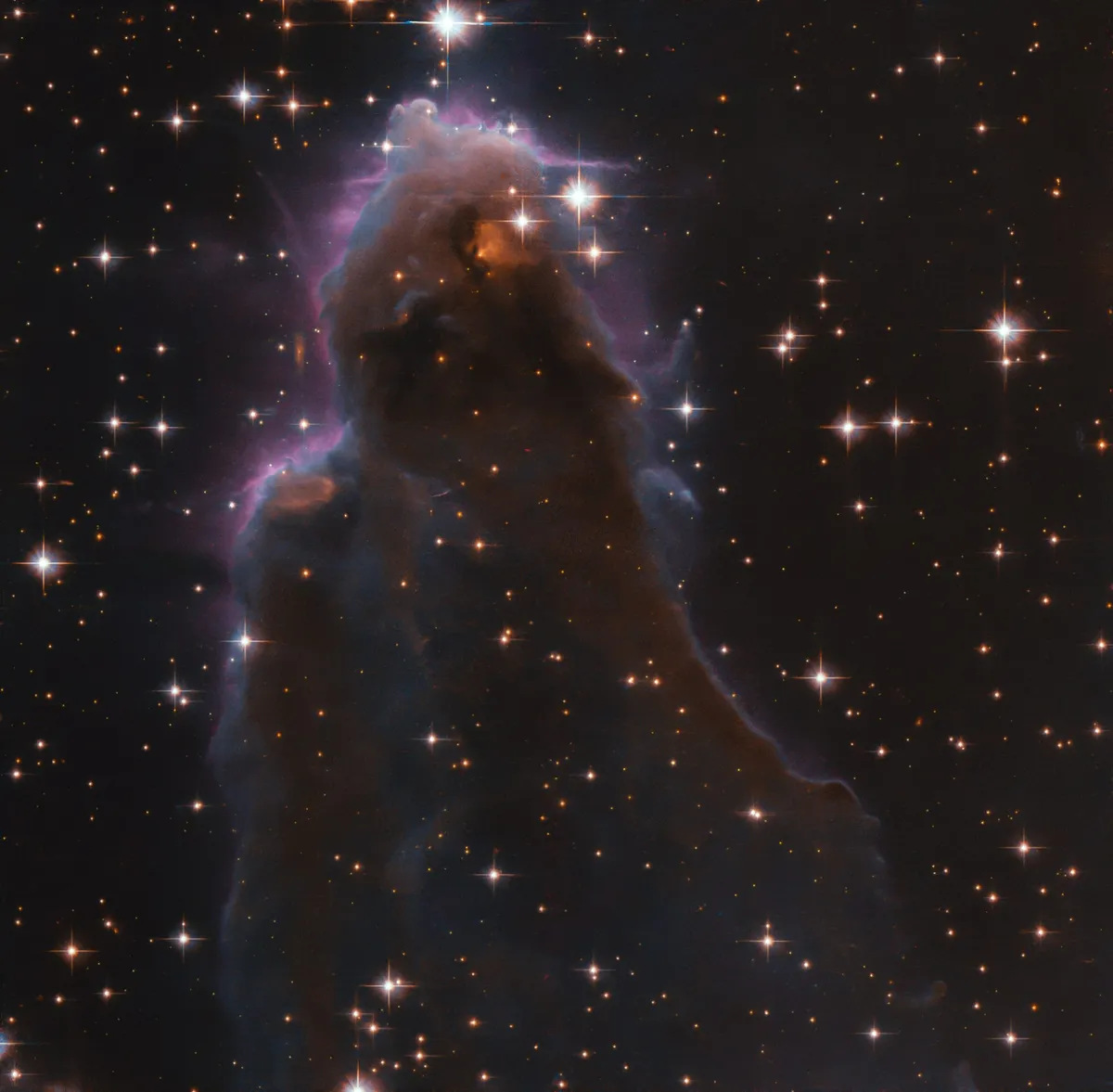
This beautiful new image captured by the Hubble Space Telescope shows a specific type of celestial phenomena known as Free-floating Gaseous Globules, or frEGGS for short.
The object in question is known formally as J025157.5+600606, and the science behind its creation is another example of the mind-blowing processes occurring throughout the cosmos.
See more Hubble images:
- Hubble captures the break-up of comet C/2019 Y4 (ATLAS)
- 16 of Hubble's most iconic images
- Hubble spies a spiral within a spiral galaxy
When a massive star is just born, sometimes it begins to glow and radiate energy even while it’s still located within the cool molecular cloud from which it formed.
The radiation emanating from the newborn star can ionise the hydrogen within the cosmic cloud to produce a hot bubble of ionised gas.
Within that hot ionised gas there may be dark, compact blobs of cosmic dust and gas, out of which stars are still being born. These are the aforementioned frEGGS.
You can see the boundary between the frEGG and the hot gas bubble as a purple/blue formation in this image.
Image stats
Observatory Hubble Space Telescope
Release date 12 October 2020
Image credit ESA/Hubble & NASA, R. Sahai
